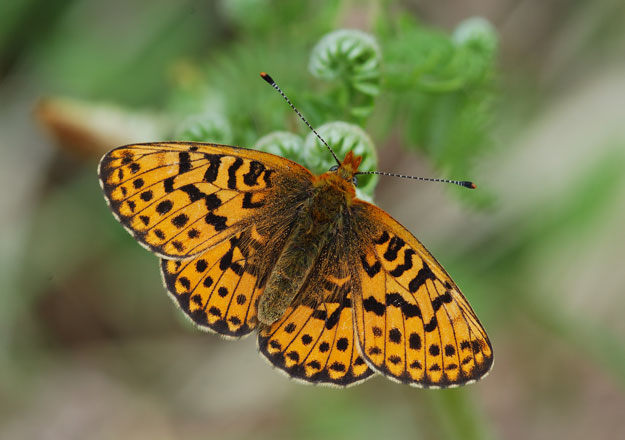One of the UK’s most threatened butterflies has seen a dramatic increase in numbers at a forest on the border between Shropshire and Worcestershire, Butterfly Conservation (BC) can reveal.
The Pearl-bordered Fritillary is being found in new locations throughout the Wyre Forest every year, with 12 new sites identified last year alone. It’s thought the increase could be down to years of work by Butterfly Conservation volunteers to create and improve habitat for the butterfly and since 2002, the number of sites where it can be found in the forest has almost trebled.
Dr Jenny Joy, BC’s Senior Regional Officer for the West Midlands, said: “The Pearl-bordered Fritillary used to be a common sight in the West Midlands, but since the 1950’s, its numbers have declined to such a point that it’s now recognised as one of the country’s most endangered butterflies.
“Based on that, these results are staggering and the butterfly is being found in new locations every year. In 2014, 12 new sites were identified in the forest, compared with six new sites in 2013 and 19 new sites in 2012. This clearly shows that the Pearl-bordered Fritillary is still moving freely around the forest and colonising new areas of habitat as they become available.”
BC has worked with the Forestry Commission and Natural England to help the butterfly by opening up several areas of the forest. This has been achieved through removing conifers, the widening of rides and the resurrection of coppicing. Monitoring and survey work by volunteers and BC’s West Midlands Branch has also been increased to include timed counts at various sites across the forest.
The butterfly can be seen anytime between mid-April and July and can be identified by its distinctive orange and yellow hindwing which has a border of silver ‘pearls’. Conservation work parties take place during the winter months to ensure everything is ready for the butterfly next year.
The next one takes place next month on Sunday 20 December. Anyone interested in attending can call Mike Williams from the West Midlands Branch of BC on: 07802 274552.
Jenny added: “Managing butterfly habitats within the Wyre has also benefitted other species, like the Dark Green Fritillary, which has reappeared after a long absence and is becoming more widespread every year. Silver-washed Fritillary is really abundant in good years and the Small Pearl-bordered Fritillary is also doing well. Marbled White and Essex Skipper continue to expand their range and important populations of Wood White and Grizzled Skipper butterflies are all found within the Forest.”
The Wyre has long been known for the richness of its butterfly fauna. The forest holds around half the total number of the UK’s butterfly and moth species, including healthy populations of several rarities.


